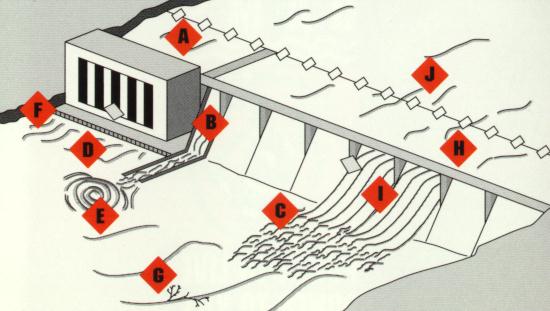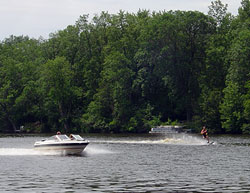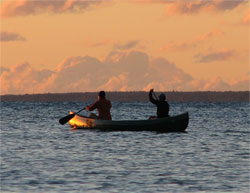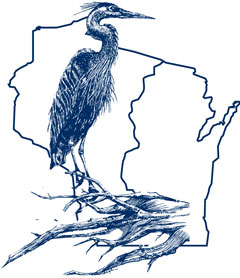Public Safety at Dams
Every year people are killed or seriously injured at dams. Most of these accidents could be avoided by simply staying clear of the restricted zones at dams, by understanding the dangers dams can create, and by obeying all warning devices.
IMPORTANT ADVICE FOR SAFETY AT DAMS THAT COULD SAVE YOUR LIFE
| Always | heed and obey dam warning signs |
| Always | stay outside buoy lines and away from restricted areas near dams |
| Always | wear a Personal Flotation Device (PFD) when near water |
| Always | be alert for flashing lights, sirens, and rising water levels |
| Always | understand and respect the danger zones near dams |
| Always | have an escape route planned |
| Never | swim near a dam |
| Never | boat or fish alone when near a dam |
Critical Danger Zones at Dams

| A | Hazard area marked by buoy lines | F | Slippery surfaces on dam structures and shorelines |
| B | Sudden Water discharge from dam gates | G | Submerged hazards above and below dams |
| C | Strong, unpredictable currents above and below dams | H | Open spillways which may not be visible from above the dam |
| D | Sudden turbulent discharges from automatically operated power house generators | I | Debris passing over or through the dam |
| E | Deceiving reverse currents below spillways | J | Ice that forms near a dam is often thin and unsafe |

Obey All Warning Signs and Signals
Be alert for the warning signs of rising water:
- Flashing lights, horns, or sirens
- Increased or changed wildlife activity
- Louder sound of rushing water
- Previously exposed rocks or snags are covered with water
- Clear water quickly becomes cloudy
- Suddenly faster water currents
Don't Take Chances When Boating or Canoeing
- Boating above or below a dam can be very dangerous. Always maintain a safe distance from the dam. Keep your motor running when near a dam so that you are always ready to maneuver or leave the area quickly
- Stay away from spillways. Changing currents and unpredictable waves make boat control difficult.
- Never anchor a boat below a dam. Rapid surges in water levels can pull an anchored boat under water in seconds.
- Beware of dangerous and unseen currents. Backrollers, eddys, and whirlpools can pull a boat upstream into a spillway and quickly capsize it.
Flood Safety
Each year, more deaths occur due to flooding than from any other severe weather related hazard. The main reason is people underestimate the force and power of water. More than half of all flood related deaths result from vehicles being swept downstream. Of these, many are preventable.
Follow these safety rules:

- Monitor the NOAA Weather Radio All Hazards, or your favorite news source for vital weather related information.
- If flooding occurs, get to higher ground. Get out of areas subject to flooding. This includes dips, low spots, canyons, washes etc.
- Avoid areas already flooded, especially if the water is flowing fast. Do not attempt to cross flowing streams. Turn Around Don't Drown
- Road beds may be washed out under flood waters. NEVER drive through flooded roadways. Turn Around Don't Drown
- Do not camp or park your vehicle along streams and rivers, particularly during threatening conditions.
- Be especially cautious at night when it is harder to recognize flood dangers.
| Downloads | |||
| Filename | Description | Date Added | |
WVIC Dam Safety Policy Statement |
06/01/2020 | ||
